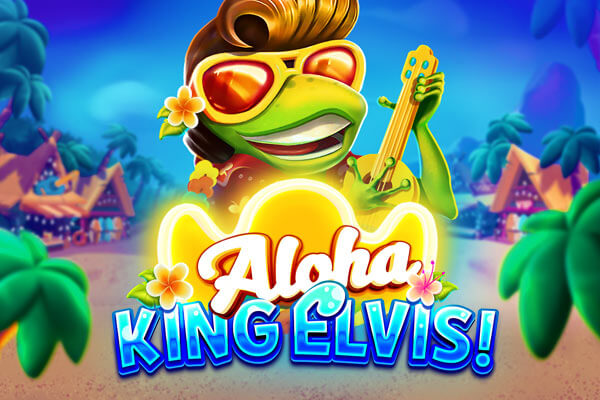Understanding UU CMS: A Comprehensive Guide to Universal CMS Solutions
In today's digital landscape, a robust and flexible Content Management System (CMS) is crucial for businesses of all sizes. While many popular CMS platforms dominate the market, the concept of a "UU CMS," or Universal CMS, is gaining traction. This article delves deep into what a UU CMS entails, its benefits, key features, and how it differs from traditional CMS solutions. We'll explore the ideal use cases, potential challenges, and provide a comprehensive overview to help you determine if a UU CMS is the right choice for your organization.
What is a UU CMS (Universal CMS)?
A Universal CMS (UU CMS) aims to provide a content management solution that can adapt to various front-end presentation layers and content delivery channels. Unlike traditional, monolithic CMS platforms that often tightly couple content creation with a specific website template or delivery method, a UU CMS prioritizes content decoupling. This decoupling allows content to be created once and then published across multiple platforms, devices, and applications without requiring significant modifications.
Think of it as a central content repository that feeds information to different "outlets," such as websites, mobile apps, smart devices, and even printed materials. This approach emphasizes content reusability, consistency, and efficient management across the entire digital ecosystem. The core principle is a headless architecture.
Key Features of a UU CMS
A true UU CMS typically boasts several key features:
Headless Architecture: This is the cornerstone. Content is stored and managed in a central repository accessible via APIs (Application Programming Interfaces). The "head" (front-end presentation layer) is detached, allowing developers to build custom front-ends tailored to specific platforms.
API-First Design: The entire CMS functionality should be accessible via robust APIs. This enables seamless integration with other systems, services, and custom applications. RESTful APIs are common.
Content Modeling: A flexible and powerful content modeling system is essential. This allows users to define custom content types, fields, and relationships to structure content according to specific business needs.
Workflow Management: A robust workflow engine allows for the creation and management of complex content approval processes. This ensures quality control and consistency across all channels.
User Management and Permissions: Granular user roles and permissions are critical for controlling access to content and functionality. This ensures that the right people have the right level of access.
Version Control: The ability to track changes to content over time and revert to previous versions is essential for maintaining accuracy and accountability.
Multi-Channel Publishing: The core strength lies in publishing content to various channels simultaneously, maintaining consistency and reducing redundancy.
Scalability and Performance: A UU CMS needs to handle a large volume of content and traffic without compromising performance. Cloud-based solutions are often preferred for their scalability.
Content Preview: This feature allows users to preview content as it will appear on different channels before publishing.
Analytics and Reporting: Integrated analytics provide insights into content performance across different channels, helping users optimize their content strategy.
Benefits of Implementing a UU CMS
Adopting a Universal CMS offers several compelling benefits:
Enhanced Content Reusability: Content is created once and reused across multiple channels, saving time and resources. Imagine updating a product description once and having it automatically updated on your website, mobile app, and even in-store kiosks.
Improved Consistency: A centralized content repository ensures consistent messaging and branding across all touchpoints. This creates a unified customer experience.
Faster Time to Market: Decoupled architecture allows developers to build and deploy new front-ends and applications more quickly. They aren't tied to the constraints of a monolithic CMS.
Greater Flexibility and Customization: Developers have complete control over the front-end presentation, enabling them to create highly customized experiences tailored to specific audiences and devices.
Future-Proofing Your Content: As new channels and technologies emerge, a UU CMS allows you to easily adapt and deliver your content to these new platforms without requiring a complete overhaul of your content management system.
Reduced Costs: By reducing content duplication and streamlining workflows, a UU CMS can significantly reduce content management costs.
Improved SEO: With clean, structured content and the ability to optimize it for different channels, a UU CMS can contribute to improved search engine rankings. This is because content is not bloated with unnecessary code associated with front-end presentation elements.
Enhanced Personalization: API-driven content delivery allows for more personalized content experiences, as you can tailor content to individual user preferences and behaviors.
UU CMS vs. Traditional CMS: Key Differences
| Feature | UU CMS (Universal CMS) | Traditional CMS |
|---|---|---|
| Architecture | Headless, API-driven | Monolithic, Tightly coupled front-end and back-end |
| Content Delivery | Multi-channel, Flexible | Primarily website-focused |
| Customization | High degree of customization, Developer-centric | Limited customization, Template-based |
| Scalability | Highly scalable, Cloud-friendly | Scalability can be challenging, Often requires more resources |
| Content Reusability | Excellent, Content is created once and reused across multiple channels | Limited, Content often needs to be adapted for each channel |
| Front-End Tech | Any front-end technology can be used (React, Angular, Vue.js, etc.) | Typically tied to the CMS's specific templating engine (e.g., PHP for WordPress) |
| API Access | Fully API-driven, Extensive API coverage | Limited API access, Often focused on specific functionalities |
| Use Cases | Multi-channel experiences, Mobile apps, IoT devices, Custom applications, Enterprise content management | Websites, Blogs, Simple online stores |
Ideal Use Cases for a UU CMS
A Universal CMS is particularly well-suited for organizations that:
Require multi-channel content delivery: Businesses that need to deliver content across a wide range of platforms, including websites, mobile apps, smart devices, and other digital channels.
Prioritize content reusability: Organizations that want to maximize the value of their content by reusing it across multiple channels.
Need a highly customizable content management solution: Businesses that require a CMS that can be tailored to their specific needs and workflows.
Want to future-proof their content management system: Organizations that want to ensure their CMS can adapt to new technologies and channels in the future.
Have a strong development team: A UU CMS typically requires more technical expertise than a traditional CMS.
Manage extensive and complex content: Organizations that deal with a large volume of diverse content types and complex workflows.
Examples of organizations that might benefit from a UU CMS include:
- Large Enterprises: Companies with complex websites, mobile apps, and other digital channels.
- E-commerce Businesses: Online retailers that need to deliver product information across multiple platforms.
- Media Companies: News organizations and publishers that need to distribute content across various channels.
- Educational Institutions: Universities and colleges that need to manage and deliver course content online.
- Government Agencies: Government organizations that need to provide information to the public through various channels.
Challenges of Implementing a UU CMS
While a UU CMS offers many benefits, it's important to be aware of the potential challenges:
- Increased Complexity: Implementing and managing a UU CMS can be more complex than using a traditional CMS.
- Requires Technical Expertise: A strong development team is essential for building and maintaining the front-end presentation layer.
- Higher Initial Investment: The initial cost of implementing a UU CMS can be higher than that of a traditional CMS.
- Steeper Learning Curve: Content creators may need to learn new workflows and tools.
- Dependency on APIs: Reliance on APIs can create potential points of failure if APIs are not well-maintained or documented.
- Vendor Lock-In (Potentially): While the headless nature promotes flexibility, some UU CMS platforms can still create a degree of vendor lock-in. Carefully evaluate the openness and portability of the chosen platform.
Popular UU CMS Platforms
Several CMS platforms offer headless or hybrid headless capabilities. Some popular options include:
- Contentful: A leading headless CMS platform known for its flexibility and scalability.
- Strapi: An open-source headless CMS that is highly customizable.
- Sanity: A composable content cloud known for its real-time collaboration features.
- Directus: An open-source headless CMS built on a database-first approach.
- Kentico Kontent: A headless CMS designed for enterprise-level content management.
- ButterCMS: A headless CMS with a focus on ease of use.
Cost Considerations for UU CMS
The cost of implementing a UU CMS varies greatly depending on factors such as:
- The chosen platform: Pricing models vary widely, from open-source solutions with minimal upfront costs to enterprise-grade platforms with subscription fees.
- Infrastructure: The cost of hosting the CMS and its associated infrastructure. Cloud-based solutions typically offer more flexible and scalable pricing.
- Development costs: The cost of building and maintaining the front-end presentation layer. This will depend on the complexity of the project and the size of the development team.
- Training and support: The cost of training content creators and developers on how to use the CMS.
A basic headless CMS can range from free (open source) to thousands of dollars per month, particularly for enterprise needs. Development costs can range from tens of thousands to hundreds of thousands, depending on the scope and complexity.
Best Practices for Implementing a UU CMS
- Define Clear Goals and Objectives: Before implementing a UU CMS, clearly define your goals and objectives. What do you want to achieve with the CMS? What channels will you be using? What are your content management workflows?
- Choose the Right Platform: Carefully evaluate different UU CMS platforms and choose the one that best meets your needs and budget.
- Invest in Content Modeling: Spend time designing a well-structured content model that reflects your business needs.
- Establish Clear Content Workflows: Define clear content creation, approval, and publishing workflows.
- Prioritize API Documentation: Ensure that your APIs are well-documented and easy to use.
- Focus on Performance: Optimize your front-end applications for performance.
- Monitor and Analyze Content Performance: Track content performance across different channels and use the insights to optimize your content strategy.
- Train Your Team: Provide adequate training to content creators and developers on how to use the CMS.
The Future of UU CMS
The future of UU CMS is bright. As businesses increasingly adopt a multi-channel approach to content delivery, the demand for flexible and scalable content management solutions will continue to grow. We can expect to see further innovation in the area of headless CMS, with a focus on ease of use, personalization, and integration with other systems. AI and machine learning will play a greater role in content creation, optimization, and delivery. Composable architectures that combine the best elements of various platforms will become increasingly prevalent.
FAQ About UU CMS
Q: What is the difference between headless CMS and decoupled CMS?
A: While the terms are often used interchangeably, there's a subtle distinction. Headless CMS completely removes the front-end presentation layer. Decoupled CMS offers more flexibility; it can still manage the front-end in some scenarios, offering a hybrid approach.
Q: Is a UU CMS right for my website?
A: It depends on your needs. If you need a simple website with limited content and minimal customization, a traditional CMS may be sufficient. However, if you need to deliver content across multiple channels, require a high degree of customization, or want to future-proof your content management system, a UU CMS may be a better choice.
Q: Can I migrate my existing content to a UU CMS?
A: Yes, you can migrate existing content to a UU CMS, but it may require some effort. You'll need to extract your content from your existing CMS and then import it into the UU CMS. The complexity of the migration will depend on the structure of your content and the capabilities of the UU CMS platform. Tools and services exist to help with content migration.
Q: What are the security considerations for a UU CMS?
A: Security is a critical consideration for any CMS. With a UU CMS, you need to secure both the backend (content repository) and the front-end applications. This includes implementing strong authentication and authorization mechanisms, protecting against common web vulnerabilities, and regularly patching your systems.
Q: What are the performance considerations for a UU CMS?
A: Performance is crucial for a good user experience. With a UU CMS, you need to optimize both the backend (content delivery) and the front-end applications. This includes caching content, optimizing images, and using a content delivery network (CDN).
Q: Is a UU CMS more expensive than a traditional CMS?
A: Potentially. The initial investment can be higher due to development costs. However, in the long run, a UU CMS can be more cost-effective by reducing content duplication, streamlining workflows, and enabling greater flexibility. You need to consider the total cost of ownership (TCO).
Q: Can I use a UU CMS with an e-commerce platform?
A: Yes, absolutely. A UU CMS can be a powerful tool for managing product content and delivering it to various e-commerce platforms, mobile apps, and other channels. You can integrate the UU CMS with your e-commerce platform via APIs.
Q: How do I choose the right UU CMS platform?
A: Consider your specific needs and budget. Evaluate different platforms based on features, scalability, ease of use, API capabilities, community support, and pricing. Consider your team's existing skills and the complexity of your project. A proof-of-concept (POC) can be helpful.
By understanding the intricacies of UU CMS solutions, businesses can make informed decisions about their content management strategy and leverage the power of decoupled architecture to create truly universal content experiences.
Slots and Games

{{Games-kaz}}

Wilds of Fortune

Aztec Sun Hold and Win

Shake shake Leprechaun

The Princess & Dwarfs

Aloha King Elvis

Aztec Magic Megaways

Miss Cherry Fruits

Shake Shake Money Tree

Shark Spin